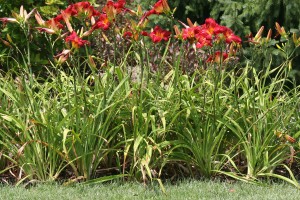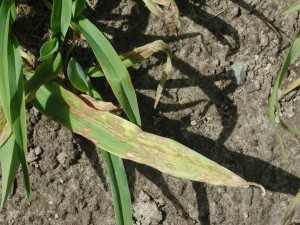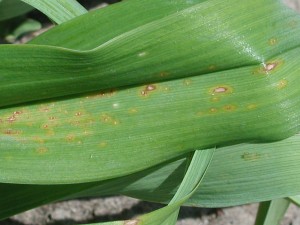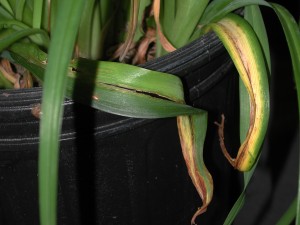Daylily leaf streak – Collecephalus hemerocalli
Pathogen: Collecephalus hemerocalli
Hosts: Hemerocallis
Symptoms: Elongated brown lesions, which are lengthwise on the foliage, surrounded by a chlorotic halo. Lesions that affect the midrib of a leaf cause the leaf to senesce from the lesion to the leaf tip. Tissue in the center of the leaf becomes necrotic, creating a dead “streak” down the middle of the infected leaf. Flower production may be decreased.
Spread: Diseased plant material can introduce the pathogen into a production area. C. hemerocalli produces wind borne spores on infected leaves. Sclerotia, an overwintering structure, are produced on dead or dying foliage.
Management: Cultivars vary in their susceptibility. Dead foliage from the preceding year should be removed. Poorly managed plants in overcrowded growing situations are more likely to become diseased. Disease is more severe early in the growing season, temperatures above 90F limits disease development.




Other Documents in this Series
You Might Also Be Interested In
-
MSU researcher awarded five-year, $2.5 million grant to develop risk assessment training program
Published on October 13, 2020
-
MSU Product Center helps Michigan food entrepreneurs survive and thrive throughout pandemic
Published on August 31, 2021
-
Protecting Michigan’s environment and wildlife through the Conservation Reserve Enhancement Program
Published on September 1, 2021
-
MSU Extension to undertake three-year, $7 million vaccination education effort
Published on August 17, 2021
-
MSU to study precision livestock farming adoption trends in U.S. swine industry
Published on March 15, 2021
-
MSU research team receives USDA grant to evaluate effectiveness, cost of new blueberry pest management strategies
Published on February 19, 2021
Accessibility Questions:
For questions about accessibility and/or if you need additional accommodations for a specific document, please send an email to ANR Communications & Marketing at anrcommunications@anr.msu.edu.



 Print
Print Email
Email




